Thinking of ordering plastic business cards, but not sure which features and options are right for you? Here’s a deep dive into everything you need to know to pick the right plastic business cards for your business.
Litho vs. Digital: Which Business Card Printing Process Should You Choose?
There are two main types of printing processes used to create plastic business cards. Digital printing uses a machine to print liquid ink or toner onto the business cards while Litho printing uses plates to add the color and details to card blanks.
Litho printing, which is also known as offset or surface printing, results in the crispest images. It is the best option if you want faces or other finely-detailed images on your cards, and is ideal for metallic business cards, clear business cards and embossed business cards. We also recommend litho printing for cards with foil and UV coating.
Digital printing requires less set-up than litho printing, making it a faster – and often more affordable – option. It is also more flexible than litho printing, making it possible to create business cards in unique custom shape die cut shapes. Since digital printing is accomplished with a printer, a single run of cards can also have multiple designs or contact information for multiple people within an organization. (This is called variable printing and businesses often leverage this option to reduce their costs by ordering cards for multiple people in their organization.)
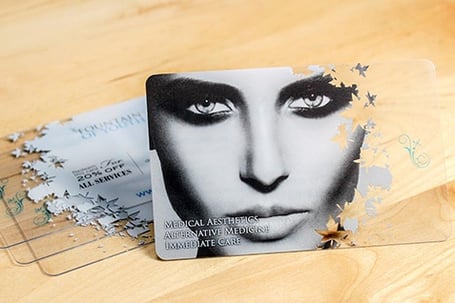 |
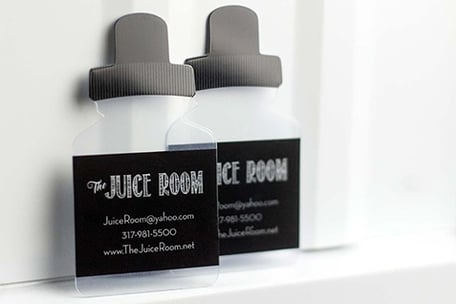 |
Plastic Business Card Finish Options & Features
Plastic business cards are available in clear, metallic, and solid-colors, but that’s just the beginning. Clear business cards, for example, can be turned into frosted cards with translucent ink. Another option is to add a solid ink layer to metallic business cards or platinum cards to give the appearance of foil without the cost. You can also add raised lettering like a credit card, referred to as embossing. Or elude elegance, sparkle or shine by incorporating a foil stamp onto your business cards, there are a multitude of colors available including green, red, blue, gold, silver, rainbow and more.
A matte finish is often applied to cards to create a premium satin finish. Laminates can also be used to protect expensive design elements. Matte also allow a writable finish if you are using your business cards to schedule a future appointment.
A gloss finish can be created by giving the card a UV coating that will increase the longevity of the card or even create waterproof business cards. Otherwise a clear laminate can be applied that offers your business card a sleek shiny look and feel to your business cards too.
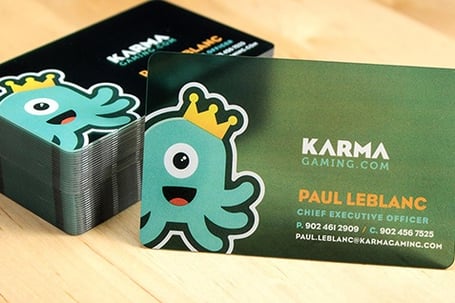 |
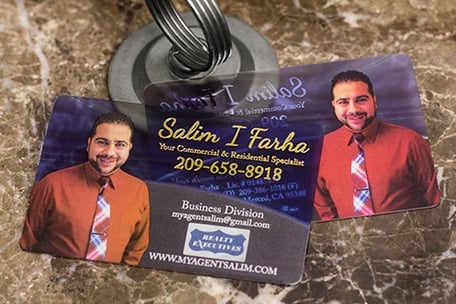 |
The Standard Business Card Size (or What to Get Instead)
The traditional business card size is 3.5” x 2” but we print the majority of of our plastic business cards at the 3.375” x 2.125” size. Why do we recommend this slight difference? Simple: traditional business cards are too wide to fit into the credit card slot in a wallet. By making cards ‘slightly’ smaller, we’re able to create business cards that are easy for your customers to slip into their wallet.
What about bigger or smaller cards? Anything that makes your business card stand out is good—but be careful not to go too small. Tiny business cards can get lost in wallets or purses, our solution is generally to add a hole and turn smaller business cards into a key chain. Smaller business cards also have less room for your contact information.
Oversized cards can be a great idea because they grab attention and give you a lot of room to brand yourself. The tradeoff is that oversized cards are less likely to get put in a pocket or wallet. One way to solve that problem, however, is to make an breakaway cards with the option to snap off a business card size piece. Or make your card into a piece that can be used everyday for something practical like a coasters, rulers or bookmarks. Then you can have the best of both worlds.
What about Custom Shape Die Cut Business Cards?
Plastic business cards give you the unique ability to make your business cards stand out with custom die-cut shapes and cut-outs. Since the digital printing process starts with a sheet of plastic, a custom shape can be much more affordable for plastic business cards than for traditional cardstock cards—all it takes is switching the die for one in the shape you want.
At Plastic Printers, we currently have over 700 unique die cuts—from business cards with notched corners to fully custom shapes. We can also make custom die cuts in the shape of your logo, an animal, a boat, truck, car, a camera, square, circle or almost any shape you can dream up or imagine.
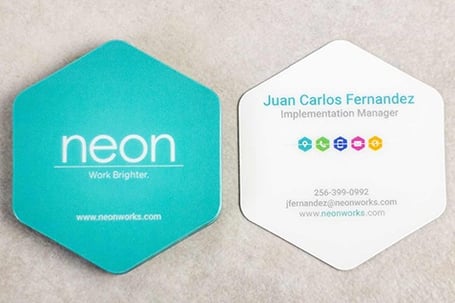 |
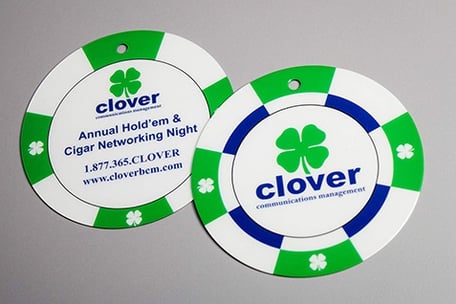 |
How Many Business Cards Should I Order?
Typically business card come 500 to a box, but that is just a starting point. Bigger orders come with cost savings because ordering more cards spreads out the set-up cost for the printing. We can, however, print smaller orders at a reasonable cost with digital printing.
If you need business cards for several people in your organization, variable printing is a great way to save money on your business card order. With variable printing, we’re able to add different information to cards within the same design. That means, instead of having to print 500 cards per person, you can order 50 cards for your new software developer, 150 cards for a marketer who needs a reorder and 300 cards for a sales rep who goes to a lot of events. Or you can add some variety to your own business cards without increasing the cost.
How to Order Business Cards:
If you’re interested in ordering plastic business cards, our process begins with a free design consultation. Our business card experts can help you create business cards with your existing branding, or create a new design for you completely customized to your business. There’s no obligation to buy from the design consultation—although we think you’ll love your cards!
To get started, chat with one of our business card experts, schedule a design consultation or request samples of our plastic business cards.
Share this
You May Also Like
These Related Stories
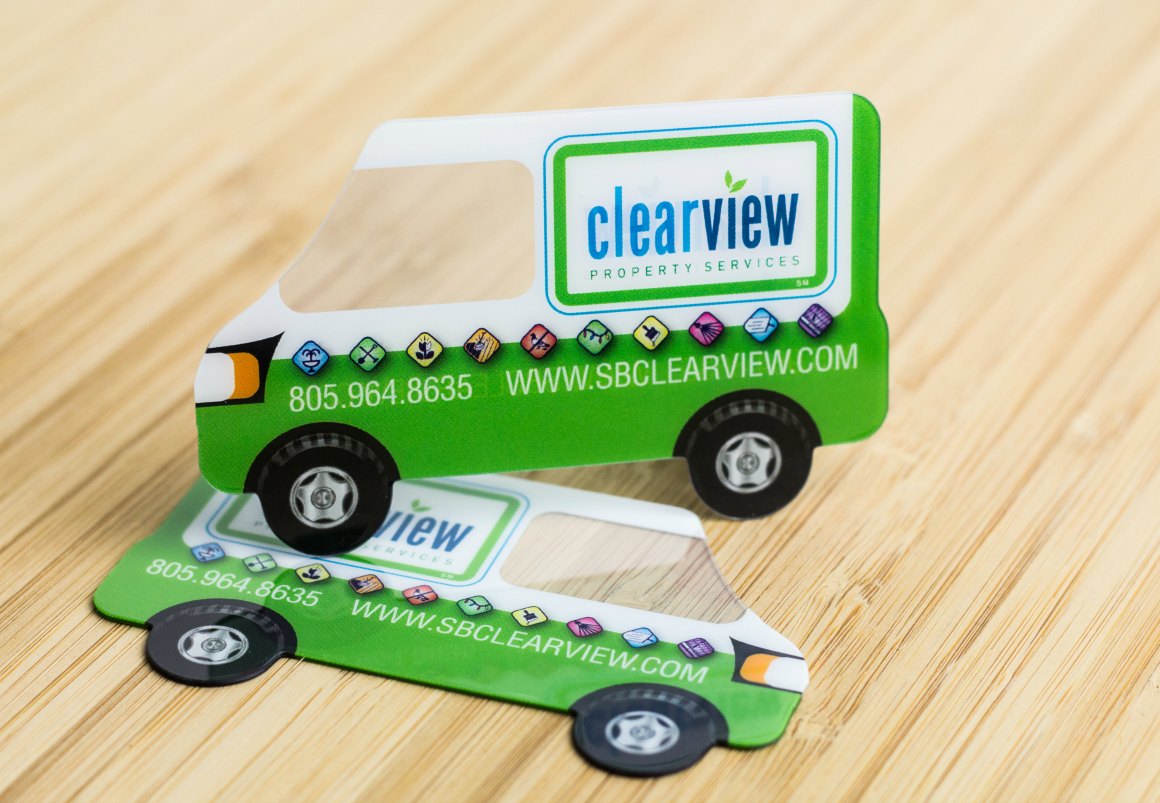
Most Popular Plastic Business Card Designs
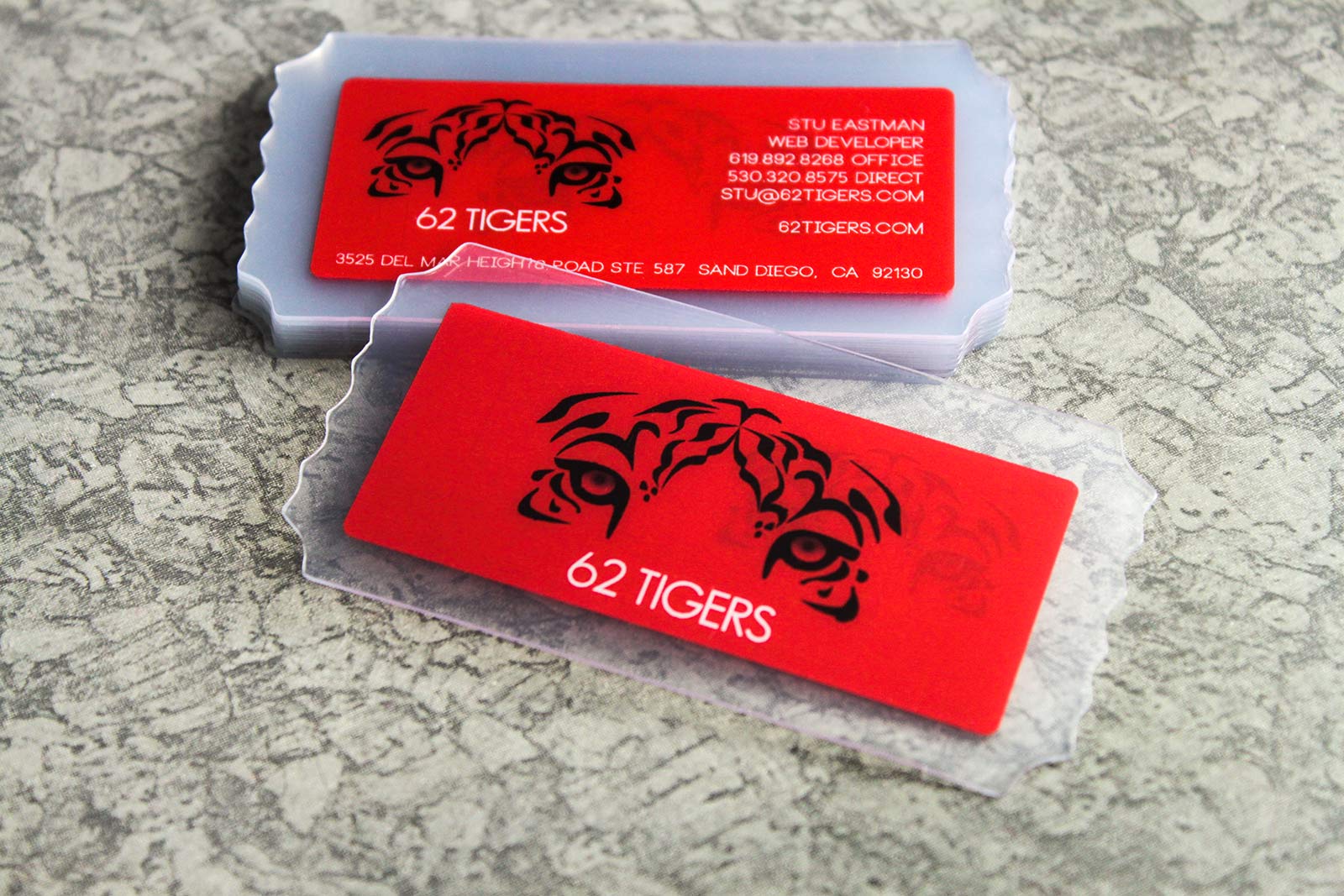
4 Ways to Make Your Business Card Stand Out
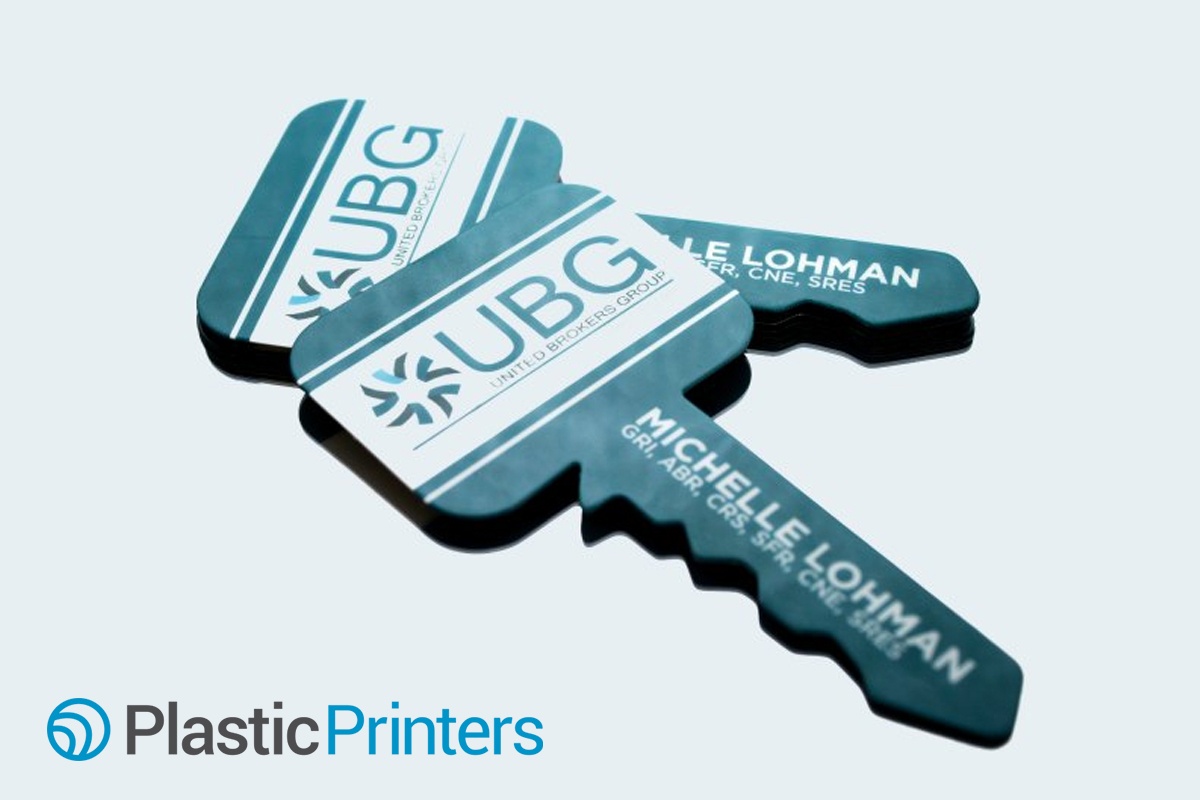



.png?width=534&height=632&name=White%20Aesthetic%20Vision%20Board%20Instagram%20Story%20(1).png)